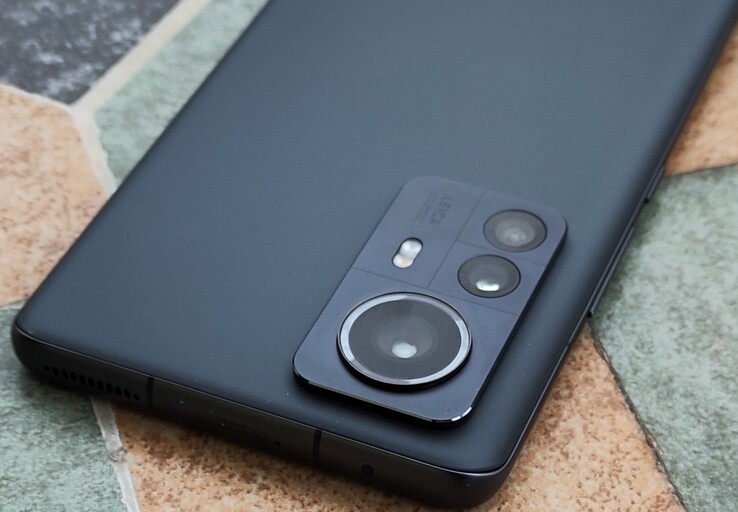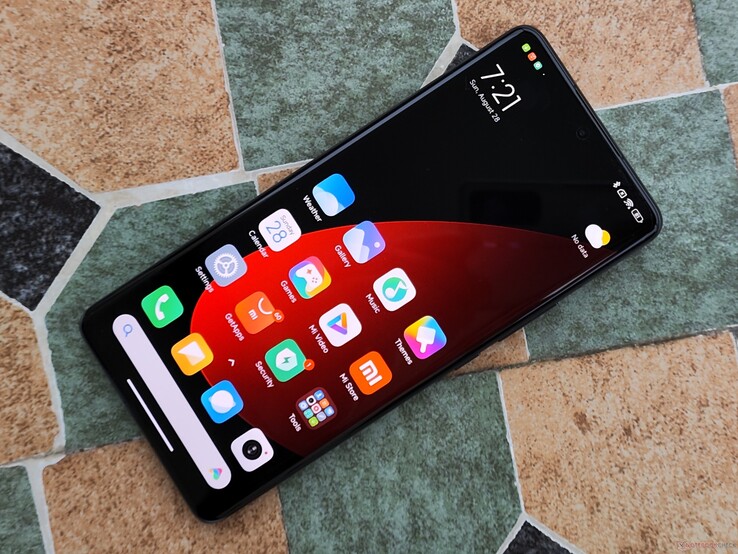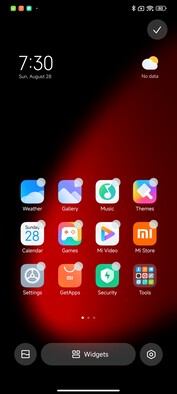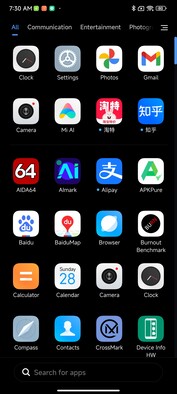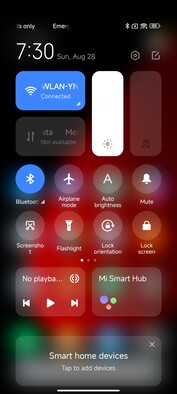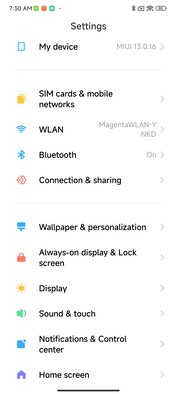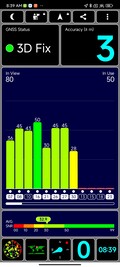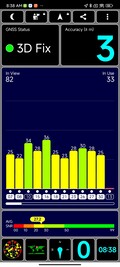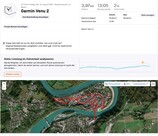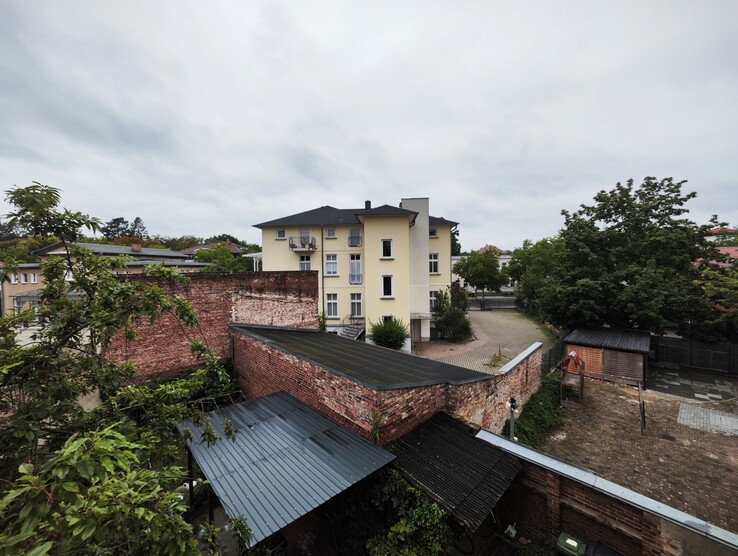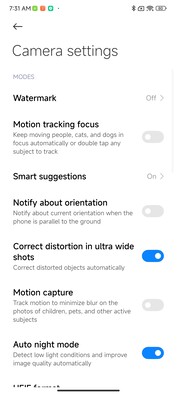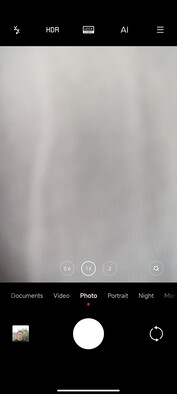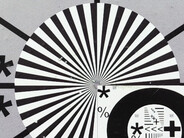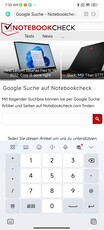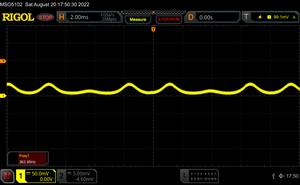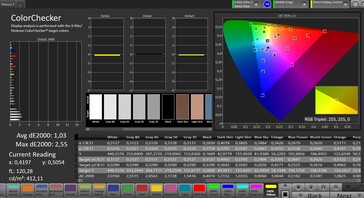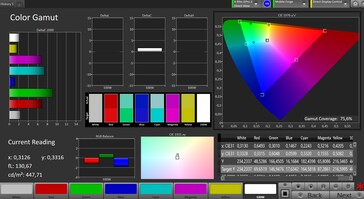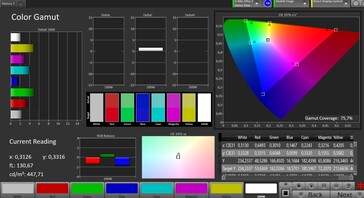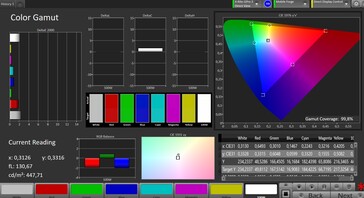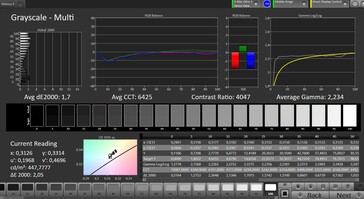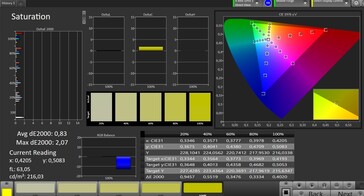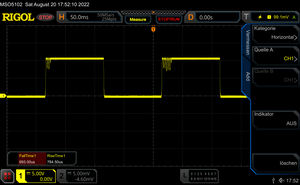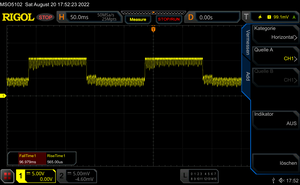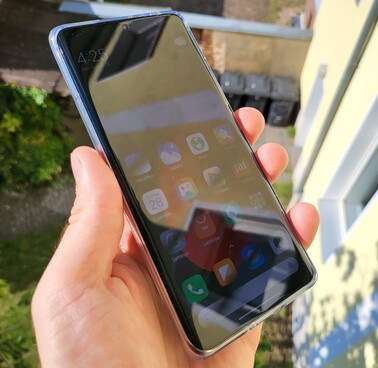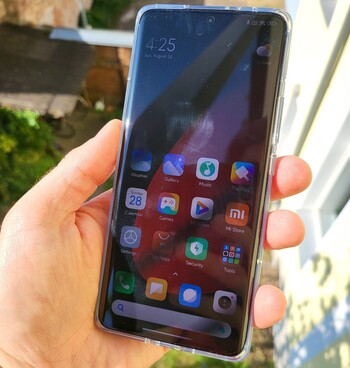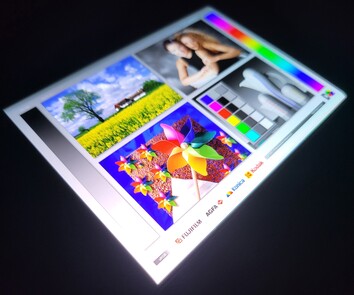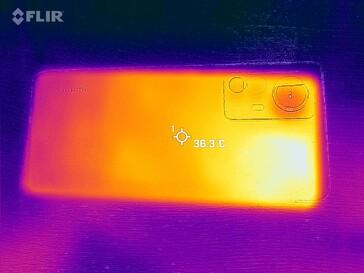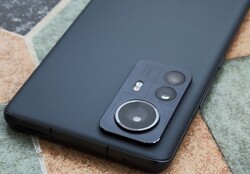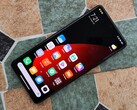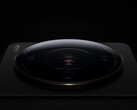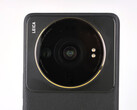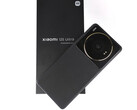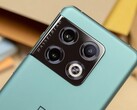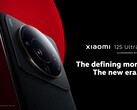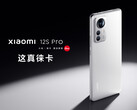Xiaomi 12S Pro review - 5G smartphone with Leica cameras and powerful equipment
In addition to its new Xiaomi 12S Ultra top model, Xiaomi also introduced its new upper-class 12S Pro at its exclusive China event. Like the flagship from the Chinese manufacturer, the 12S Pro also uses a main camera that was developed in cooperation with Leica. In addition to this 50-MP lens, the upper-class Xiaomi also offers two more 50-MP sensors.
Aside from the camera hardware, the Xiaomi 12S Pro also offers some interesting equipment with the powerful Snapdragon 8+ Gen 1 and a large, 6.73-inch 1440p AMOLED display, which offers a refresh rate between 1 and 120 Hz thanks to LTPO 2.0 technology.
Since the Xiaomi 12S series will only be available in China, the Xiaomi 12S Pro can only be purchased from import vendors starting from around 800 Euros (~$803).
Possible Competitors in Comparison
Rating | Date | Model | Weight | Drive | Size | Resolution | Price |
|---|---|---|---|---|---|---|---|
| 88 % v7 (old) | 09 / 2022 | Xiaomi 12S Pro SD 8+ Gen 1, Adreno 730 | 204 g | 256 GB UFS 3.1 Flash | 6.73" | 3200x1440 | |
| 87.6 % v7 (old) | 02 / 2022 | Xiaomi 12 Pro SD 8 Gen 1, Adreno 730 | 204 g | 256 GB UFS 3.1 Flash | 6.73" | 3200x1440 | |
| 87 % v7 (old) | 08 / 2022 | OnePlus 10T SD 8+ Gen 1, Adreno 730 | 203.5 g | 256 GB UFS 3.1 Flash | 6.70" | 2412x1080 | |
| 88.9 % v7 (old) | 05 / 2022 | Samsung Galaxy S22+ Exynos 2200, Xclipse 920 | 196 g | 128 GB UFS 3.1 Flash | 6.60" | 2340x1080 | |
| 87.5 % v7 (old) | 08 / 2022 | ZTE Axon 40 Ultra SD 8 Gen 1, Adreno 730 | 204 g | 128 GB UFS 3.1 Flash | 6.80" | 2480x1116 |
Case - Xiaomi smartphone without IP rating
Visually, the Xiaomi 12S Pro hardly differs from the Xiaomi 12 Pro that is available in Germany. The workmanship of the case meets the highest demands, as buyers of a high-end smartphone in 2022 should be able to expect.
However, in contrast to the Ultra model, the Xiaomi upper-class smartphone doesn't offer any IP certification. We don't know whether the manufacturer uses a nano coating from P2i as in other models, allowing them to survive a rain shower without any problems. At least there is a slim seal around the SIM tray, which is made from plastic.
The punch hole in front ensures slim display bezels and gives the Xiaomi smartphone an efficient display-to-surface ratio of almost 90%. Both in the front and back, Gorilla Glass Victus is used.
Equipment - Xiaomi 12S Pro with UFS storage
The Xiaomi 12S Pro is available in four different versions (8 GB + 128/256 GB, 12 + 256 /512 GB). The equipment includes an IR blaster, Miracast, Bluetooth 5.2, and NFC including Google Pay, since there is a Play Protect certification.
In our test unit, the internal eMMC storage offers a capacity of 256 GB, with only about 224 GB remaining available to the user in the state of delivery. Those for whom this storage space is insufficient will need to choose the larger storage version, since storage expansion via microSD cards is not supported.
You can connect peripheral devices such as a storage stick to the USB-C port via OTG adapter. The USB port supports the 2.0 standard for the data transfer.
Software - Xiaomi smartphone with Android 12
The operating system of the Xiaomi 12S Pro is based on version 12 of Google's Android. At the time of our test, the security patches are at the level of July 2022. On top of Android, the manufacturer installed its inhouse MIUI version 13. We are unable to find out whether the update warranty of the global Xiaomi 12 series that includes three large Android updates and four years of security updates is also valid for the China-exclusive upper-class model.
Since the Xiaomi 12S Pro is designed for the Chinese market, the software doesn't support any Google services in the state of delivery and only offers English as system language in addition to Chinese. However, in contrast to Huawei smartphones, you can easily install Google services later.
Communication and GNSS - Xiaomi 12S Pro with 5G
The Xiaomi 12S Pro supports access to the mobile 5G network and a total of 18 LTE bands. However, those unfortunately don't include bands 20 and 28, which are important to use it in Germany.
In the WLAN at home, the high-end smartphone offers WiFi 6E. In combination with our Asus ROG Rapture GT-AXE11000 reference router, this is sufficient for transfer rates higher than 900 Mbit/s on average. Although the transfer rates we measured are pleasantly high, we would have expected a slightly higher speed, considering that a global 12 Pro fares better here. In our test, a connection to the 6-GHz frequency range is not possible.
| Networking | |
| iperf3 receive AXE11000 | |
| Xiaomi 12 Pro | |
| Xiaomi 12S Pro | |
| OnePlus 10T | |
| ZTE Axon 40 Ultra | |
| Samsung Galaxy S22+ | |
| Average of class Smartphone (52 - 1721, n=177, last 2 years) | |
| iperf3 transmit AXE11000 | |
| Xiaomi 12 Pro | |
| Xiaomi 12S Pro | |
| OnePlus 10T | |
| Samsung Galaxy S22+ | |
| ZTE Axon 40 Ultra | |
| Average of class Smartphone (49.8 - 1828, n=177, last 2 years) | |
| iperf3 transmit AXE11000 6GHz | |
| Samsung Galaxy S22+ | |
| Average of class Smartphone (508 - 1945, n=95, last 2 years) | |
| iperf3 receive AXE11000 6GHz | |
| Samsung Galaxy S22+ | |
| Average of class Smartphone (451 - 1870, n=95, last 2 years) | |
In order to evaluate the locating accuracy of the upper-class smartphone in practice, we record a route in parallel with the Garmin Venu 2.
Similar to the 12S Ultra, the detailed route recording shows a few inaccuracies, which is a bit unusual in this price class and could possibly be due to the restrictive MIUI of the Chinese version.
Telephone Functions and Voice Quality - Xiaomi smartphone with dual-SIM
The voice quality of the Xiaomi 12S Pro is at a decent level. We were unable to find a WiFi calling option in the settings, and our SIM card in the Telecom net also doesn't support the option for voice over LTE, which allows for voice calling using the 4G net. However, according to the manufacturer, dual-SIM with dual-VoLTE is basically supported.
Cameras - Xiaomi smartphone with triple-cam
There is no difference to the Xiaomi 12 Pro in the built-in cameras. The main camera of the 12S Pro is based on the Sony IMX 707 and supported by a 50-MP portrait camera with 2x optical zoom and a 50-MP resolution ultrawide angle camera. The picture quality of the IMX 707 together with OIS is very good, and the pictures contain many details with vibrant colors. On the other hand, the dynamic could have turned out slightly higher, and our analysis of the color accuracy also shows several outliers.
The ultrawide angle camera offers a decent sharpness, which compared to the main camera drops visibly, though. Even though the curving of the lens is corrected cleanly, the details could have been reproduced better. In terms of the zoom, the Xiaomi 12S Pro also doesn't show its strengths. While the lossless 2x enlargement is quite convincing, at higher zoom levels and digital enlargements, the recordings of the 50-MP lens appear fairly artificial and poor in detail.
Image comparison
Choose a scene and navigate within the first image. One click changes the position on touchscreens. One click on the zoomed-in image opens the original in a new window. The first image shows the scaled photograph of the test device.
Main CameraMain CameraLow LightUltrawide Angle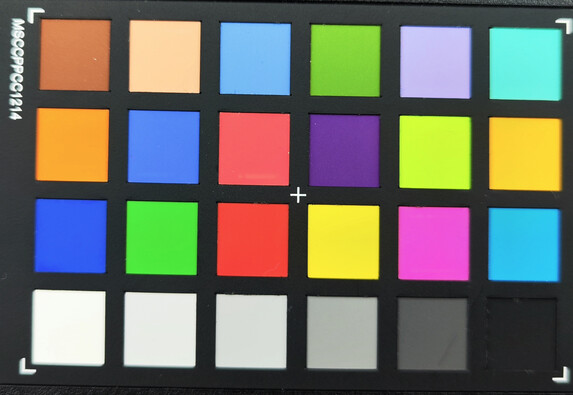
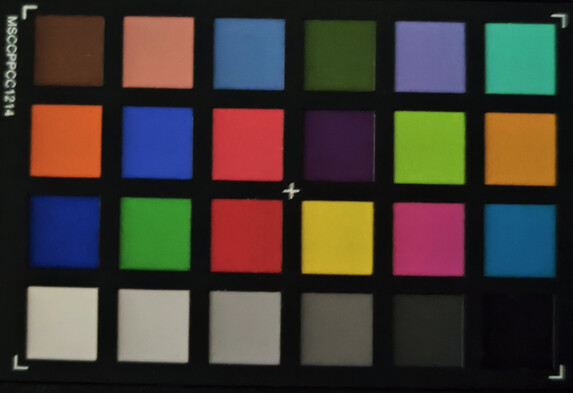
Accessories and Warranty - Xiaomi 12S Pro with charger
Included in the box are a USB cable, a protective cover, and a modular 120-Watt Chinese charger. In addition, TradingShenzhen also includes a EU adapter for the outlets used in Germany. However, this isn't part of the standard equipment but is only a special service by the vendor.
The warranty period is 12 months. With our test unit from TradingShenzhen, there is also the option to ship the 12S Pro to a German address in case of a warranty.
Input Devices and Operation - Xiaomi smartphone with FaceUnlock
The vibration motor delivers a good haptic feedback, working at a high quality level. The capacitive touchscreen of the Xiaomi 12S Pro recognizes up to ten touch points simultaneously. Both the refresh rate (120 Hz) and also the input sampling rate of the touchscreen (240 Hz) are significantly higher than the 60-Hz mark, making the 6.73-inch OLED panel very responsive.
Below the display is an optical fingerprint sensor, which recognizes the finger reliably, even though it isn't the fastest. The 12S Ultra responds much faster here. A biometric identification via face recognition with the front camera unlocks the upper-class smartphone just as reliably, although this is not very secure (2D). However, with MIUI 13, Xiaomi promises some machine learning algorithms that are supposed to improve the security of the 2D recognition via the front camera.
Display - Xiaomi 12S Pro with OLED
The Xiaomi 12S Pro offers a 6.73-inch LTPO 2.0 OLED panel with a format of 20:9, an adaptive refresh rate of up to 120 Hz, and a QHD+ resolution. In our measurements, the display brightness is at a good level at a maximum of 841 cd/m², but the Samsung competitors get significantly brighter and the manufacturer-specified level of 1,500 nits is also missed significantly. Although it is at least 952 cd/m² in our APL18 measurements, this would still be too little for an impressive HDR experience.
The Xiaomi smartphone uses PWM at a fairly high frequency of 121 to 364 Hz for brightness control. What is not typical for an OLED panel is the uneven brightness distribution of less than 80%. Possibly, this might be a display fault of our test unit.
| |||||||||||||||||||||||||
Brightness Distribution: 78 %
Center on Battery: 841 cd/m²
Contrast: ∞:1 (Black: 0 cd/m²)
ΔE ColorChecker Calman: 1.03 | ∀{0.5-29.43 Ø4.77}
ΔE Greyscale Calman: 1.7 | ∀{0.09-98 Ø5}
99.8% sRGB (Calman 2D)
Gamma: 2.234
CCT: 6425 K
| Xiaomi 12S Pro OLED, 3200x1440, 6.7" | Xiaomi 12 Pro AMOLED, 3200x1440, 6.7" | OnePlus 10T Fluid AMOLED, 2412x1080, 6.7" | Samsung Galaxy S22+ AMOLED, 2340x1080, 6.6" | ZTE Axon 40 Ultra AMOLED, 2480x1116, 6.8" | |
|---|---|---|---|---|---|
| Screen | 4% | -36% | -21% | -35% | |
| Brightness middle (cd/m²) | 841 | 959 14% | 861 2% | 1090 30% | 682 -19% |
| Brightness (cd/m²) | 749 | 977 30% | 856 14% | 1097 46% | 683 -9% |
| Brightness Distribution (%) | 78 | 96 23% | 97 24% | 98 26% | 94 21% |
| Black Level * (cd/m²) | |||||
| Colorchecker dE 2000 * | 1.03 | 1.1 -7% | 2.27 -120% | 2.5 -143% | 1.8 -75% |
| Colorchecker dE 2000 max. * | 2.55 | 3.1 -22% | 4.17 -64% | 3.8 -49% | 4.7 -84% |
| Greyscale dE 2000 * | 1.7 | 1.9 -12% | 2.9 -71% | 2.3 -35% | 2.4 -41% |
| Gamma | 2.234 98% | 2.22 99% | 2.303 96% | 2.04 108% | 2.16 102% |
| CCT | 6425 101% | 6498 100% | 6141 106% | 6492 100% | 6634 98% |
* ... smaller is better
Screen Flickering / PWM (Pulse-Width Modulation)
| Screen flickering / PWM detected | 364 Hz | ||
The display backlight flickers at 364 Hz (worst case, e.g., utilizing PWM) . The frequency of 364 Hz is relatively high, so most users sensitive to PWM should not notice any flickering. However, there are reports that some users are still sensitive to PWM at 500 Hz and above, so be aware. In comparison: 53 % of all tested devices do not use PWM to dim the display. If PWM was detected, an average of 8081 (minimum: 5 - maximum: 343500) Hz was measured. | |||
Series of measurements at a fixed zoom level in various brightness settings
Our analysis of the photo spectrometer and CalMAN software results in relatively low average Delta-E deviations to the sRGB color space. In addition to chosing among three color profiles, you can also adjust the color space and separate parameters individually.
Display Response Times
| ↔ Response Time Black to White | ||
|---|---|---|
| 1.5 ms ... rise ↗ and fall ↘ combined | ↗ 0.7 ms rise | |
| ↘ 0.8 ms fall | ||
| The screen shows very fast response rates in our tests and should be very well suited for fast-paced gaming. In comparison, all tested devices range from 0.1 (minimum) to 240 (maximum) ms. » 8 % of all devices are better. This means that the measured response time is better than the average of all tested devices (20.2 ms). | ||
| ↔ Response Time 50% Grey to 80% Grey | ||
| 1.6 ms ... rise ↗ and fall ↘ combined | ↗ 1 ms rise | |
| ↘ 0.6 ms fall | ||
| The screen shows very fast response rates in our tests and should be very well suited for fast-paced gaming. In comparison, all tested devices range from 0.165 (minimum) to 636 (maximum) ms. » 7 % of all devices are better. This means that the measured response time is better than the average of all tested devices (31.6 ms). | ||
When using it outdoors, the Xiaomi 12S Pro leaves a good impression. While direct sunlight poses no problem for the upper-class smartphone, you still have to avoid reflections. The viewing angles of the OLED panel are very good, and the brightness decrease viewing it from the sides also turns out low.
Performance - Xiaomi smartphone with a Qualcomm SoC
In everyday operation, the powerful Snapdragon 8+ Gen 1 ensures a very good system speed and smooth operation. The values in our benchmark measurements are at a high level and often even better than those of a Asus ROG Phone 6 Pro. In contrast to the OnePlus 10T, the Xiaomi 12S Pro doesn't have a limitation in the onscreen values of the GFX Bench benchmark.
Like the 12S Ultra, the Pro model shows very good read and write rates. The UFS storage of the upper-class smartphone impresses with a speed of almost 2,000 Mbit/s.
| AImark - Score v2.x | |
| Xiaomi 12 Pro | |
| Xiaomi 12S Pro | |
| OnePlus 10T | |
| Asus ROG Phone 6 Pro | |
| ZTE Axon 40 Ultra | |
| Average Qualcomm Snapdragon 8+ Gen 1 (1043 - 7865, n=11) | |
| Samsung Galaxy S22+ | |
| 3DMark | |
| Wild Life Extreme Unlimited | |
| OnePlus 10T | |
| Xiaomi 12S Pro | |
| Xiaomi 12 Pro | |
| ZTE Axon 40 Ultra | |
| Samsung Galaxy S22+ | |
| Wild Life Extreme | |
| OnePlus 10T | |
| Xiaomi 12S Pro | |
| Xiaomi 12 Pro | |
| ZTE Axon 40 Ultra | |
| Samsung Galaxy S22+ | |
| Wild Life Unlimited Score | |
| Xiaomi 12S Pro | |
| OnePlus 10T | |
| Xiaomi 12 Pro | |
| ZTE Axon 40 Ultra | |
| Samsung Galaxy S22+ | |
| Wild Life Score | |
| Xiaomi 12 Pro | |
| Samsung Galaxy S22+ | |
| ZTE Axon 40 Ultra | |
| GFXBench (DX / GLBenchmark) 2.7 | |
| T-Rex Onscreen | |
| Xiaomi 12 Pro | |
| Xiaomi 12S Pro | |
| Samsung Galaxy S22+ | |
| ZTE Axon 40 Ultra | |
| OnePlus 10T | |
| 1920x1080 T-Rex Offscreen | |
| Xiaomi 12S Pro | |
| OnePlus 10T | |
| ZTE Axon 40 Ultra | |
| Xiaomi 12 Pro | |
| Samsung Galaxy S22+ | |
| GFXBench 3.0 | |
| on screen Manhattan Onscreen OGL | |
| Xiaomi 12S Pro | |
| ZTE Axon 40 Ultra | |
| Samsung Galaxy S22+ | |
| Xiaomi 12 Pro | |
| OnePlus 10T | |
| 1920x1080 1080p Manhattan Offscreen | |
| Xiaomi 12S Pro | |
| Xiaomi 12 Pro | |
| OnePlus 10T | |
| Samsung Galaxy S22+ | |
| ZTE Axon 40 Ultra | |
| GFXBench 3.1 | |
| on screen Manhattan ES 3.1 Onscreen | |
| Samsung Galaxy S22+ | |
| ZTE Axon 40 Ultra | |
| Xiaomi 12S Pro | |
| Xiaomi 12 Pro | |
| OnePlus 10T | |
| 1920x1080 Manhattan ES 3.1 Offscreen | |
| OnePlus 10T | |
| Xiaomi 12 Pro | |
| Samsung Galaxy S22+ | |
| Xiaomi 12S Pro | |
| ZTE Axon 40 Ultra | |
| GFXBench | |
| on screen Car Chase Onscreen | |
| Xiaomi 12S Pro | |
| Samsung Galaxy S22+ | |
| ZTE Axon 40 Ultra | |
| OnePlus 10T | |
| Xiaomi 12 Pro | |
| 1920x1080 Car Chase Offscreen | |
| OnePlus 10T | |
| Xiaomi 12S Pro | |
| Samsung Galaxy S22+ | |
| Xiaomi 12 Pro | |
| ZTE Axon 40 Ultra | |
| on screen Aztec Ruins High Tier Onscreen | |
| Xiaomi 12S Pro | |
| OnePlus 10T | |
| Samsung Galaxy S22+ | |
| ZTE Axon 40 Ultra | |
| Xiaomi 12 Pro | |
| 2560x1440 Aztec Ruins High Tier Offscreen | |
| Xiaomi 12S Pro | |
| OnePlus 10T | |
| Xiaomi 12 Pro | |
| ZTE Axon 40 Ultra | |
| Samsung Galaxy S22+ | |
| on screen Aztec Ruins Normal Tier Onscreen | |
| Xiaomi 12S Pro | |
| ZTE Axon 40 Ultra | |
| Samsung Galaxy S22+ | |
| OnePlus 10T | |
| Xiaomi 12 Pro | |
| 1920x1080 Aztec Ruins Normal Tier Offscreen | |
| OnePlus 10T | |
| Xiaomi 12S Pro | |
| Xiaomi 12 Pro | |
| ZTE Axon 40 Ultra | |
| Samsung Galaxy S22+ | |
| Jetstream 2 - 2.0 Total Score | |
| Average of class Smartphone (23.8 - 387, n=147, last 2 years) | |
| ZTE Axon 40 Ultra (Chrome 103.0.5060.71) | |
| Average Qualcomm Snapdragon 8+ Gen 1 (76.2 - 204, n=23) | |
| Samsung Galaxy S22+ (Chrome 100.0.4896.127) | |
| Xiaomi 12S Pro (edge 104) | |
| Xiaomi 12 Pro (Chrome 97) | |
| OnePlus 10T (Chrome 104) | |
| Octane V2 - Total Score | |
| Average of class Smartphone (2228 - 126661, n=194, last 2 years) | |
| ZTE Axon 40 Ultra (Chrome 103.0.5060.71) | |
| Samsung Galaxy S22+ (Chrome 100.0.4896.127) | |
| Average Qualcomm Snapdragon 8+ Gen 1 (17622 - 61536, n=24) | |
| OnePlus 10T (Chrome 104) | |
| Xiaomi 12S Pro (edge 104) | |
| Xiaomi 12 Pro (Chrome 97) | |
| Mozilla Kraken 1.1 - Total | |
| OnePlus 10T (Chrome 104) | |
| Samsung Galaxy S22+ (Chrome 100.0.4896.127) | |
| Xiaomi 12 Pro (Chrome 97) | |
| Average of class Smartphone (257 - 28190, n=154, last 2 years) | |
| Xiaomi 12S Pro (edge 104) | |
| Average Qualcomm Snapdragon 8+ Gen 1 (665 - 1707, n=22) | |
| ZTE Axon 40 Ultra (Chrome 103.0.5060.71) | |
* ... smaller is better
| Xiaomi 12S Pro | Xiaomi 12 Pro | OnePlus 10T | Samsung Galaxy S22+ | ZTE Axon 40 Ultra | Average 256 GB UFS 3.1 Flash | Average of class Smartphone | |
|---|---|---|---|---|---|---|---|
| AndroBench 3-5 | -6% | -41% | -23% | -22% | -18% | 2% | |
| Sequential Read 256KB (MB/s) | 1965.43 | 1620 -18% | 1568.37 -20% | 1629.99 -17% | 1638.15 -17% | 1757 ? -11% | 2235 ? 14% |
| Sequential Write 256KB (MB/s) | 1447.35 | 1465 1% | 847.69 -41% | 1001.67 -31% | 1065.13 -26% | 1204 ? -17% | 1871 ? 29% |
| Random Read 4KB (MB/s) | 327.55 | 324.9 -1% | 173.45 -47% | 306.7 -6% | 313.35 -4% | 287 ? -12% | 297 ? -9% |
| Random Write 4KB (MB/s) | 465.89 | 448.9 -4% | 211.24 -55% | 297.67 -36% | 273.19 -41% | 318 ? -32% | 343 ? -26% |
Emissions - The Xiaomi 12S Pro gets hot
Temperatures
The pronounced heat development of the case turns out problematic in the Xiaomi 12S Pro. To evaluate the heat development inside, we use the stress tests of the 3DMark benchmark. The load scenarios show that like in the 12 Pro with the Snapdragon 8 Gen 1, the performance drops significantly after longer load phases to avoid overheating of the system.
(±) The maximum temperature on the upper side is 42.6 °C / 109 F, compared to the average of 35.2 °C / 95 F, ranging from 21.9 to 247 °C for the class Smartphone.
(±) The bottom heats up to a maximum of 41.1 °C / 106 F, compared to the average of 34 °C / 93 F
(+) In idle usage, the average temperature for the upper side is 26.1 °C / 79 F, compared to the device average of 32.9 °C / 91 F.
3DMark Wild Life Stress Test
| 3DMark | |
| Wild Life Stress Test Stability | |
| OnePlus 10T | |
| ZTE Axon 40 Ultra | |
| Samsung Galaxy S22+ | |
| Xiaomi 12S Pro | |
| Xiaomi 12 Pro | |
| Wild Life Extreme Stress Test | |
| Xiaomi 12S Pro | |
| ZTE Axon 40 Ultra | |
| Samsung Galaxy S22+ | |
| Xiaomi 12 Pro | |
| OnePlus 10T | |
Speaker
The Xiaomi 12S Pro uses two speakers that produce a maximum volume of 85 dB. Our measurement of the Xiaomi smartphone shows a linear frequency reproduction for the mids, and the drop in the super high frequencies is also small.
Wired and wireless headphone output is also available via USB-C and Bluetooth 5.2. Music fans will be pleased with the extensive support of codecs such as aptX, aptX HD, AAC, LDAC, and LHDC.
Xiaomi 12S Pro audio analysis
(+) | speakers can play relatively loud (85 dB)
Bass 100 - 315 Hz
(-) | nearly no bass - on average 23% lower than median
(±) | linearity of bass is average (11.1% delta to prev. frequency)
Mids 400 - 2000 Hz
(+) | balanced mids - only 4.4% away from median
(+) | mids are linear (5.1% delta to prev. frequency)
Highs 2 - 16 kHz
(±) | higher highs - on average 5.3% higher than median
(±) | linearity of highs is average (8% delta to prev. frequency)
Overall 100 - 16.000 Hz
(±) | linearity of overall sound is average (19.4% difference to median)
Compared to same class
» 27% of all tested devices in this class were better, 8% similar, 64% worse
» The best had a delta of 11%, average was 35%, worst was 134%
Compared to all devices tested
» 47% of all tested devices were better, 7% similar, 46% worse
» The best had a delta of 4%, average was 24%, worst was 134%
Xiaomi 12 Pro audio analysis
(+) | speakers can play relatively loud (84.2 dB)
Bass 100 - 315 Hz
(-) | nearly no bass - on average 18.8% lower than median
(±) | linearity of bass is average (12.9% delta to prev. frequency)
Mids 400 - 2000 Hz
(+) | balanced mids - only 4.2% away from median
(+) | mids are linear (4.4% delta to prev. frequency)
Highs 2 - 16 kHz
(+) | balanced highs - only 3.1% away from median
(+) | highs are linear (6.8% delta to prev. frequency)
Overall 100 - 16.000 Hz
(+) | overall sound is linear (14.8% difference to median)
Compared to same class
» 2% of all tested devices in this class were better, 2% similar, 96% worse
» The best had a delta of 11%, average was 35%, worst was 134%
Compared to all devices tested
» 19% of all tested devices were better, 4% similar, 77% worse
» The best had a delta of 4%, average was 24%, worst was 134%
Battery Life - Xiaomi 12S Pro with 120 watts
Power Consumption
The high-end smartphone from Xiaomi supports wired charging up to 120 watts and wireless up to 50 watts. Reverse charging at 10 watts is also supported. The 4,800-mAh battery is quickly recharged using the included charger. Thanks to the quick-charge technology, it takes only 23 minutes to completely recharge the battery.
| Off / Standby | |
| Idle | |
| Load |
|
Key:
min: | |
| Xiaomi 12S Pro 4800 mAh | Xiaomi 12 Pro 4600 mAh | OnePlus 10T 4800 mAh | Samsung Galaxy S22+ 4500 mAh | ZTE Axon 40 Ultra 5000 mAh | Average Qualcomm Snapdragon 8+ Gen 1 | Average of class Smartphone | |
|---|---|---|---|---|---|---|---|
| Power Consumption | -1% | 17% | -2% | -6% | -22% | -18% | |
| Idle Minimum * (Watt) | 0.9 | 0.94 -4% | 0.8 11% | 0.71 21% | 0.88 2% | 1.006 ? -12% | 0.847 ? 6% |
| Idle Average * (Watt) | 1.2 | 1.24 -3% | 1.2 -0% | 1.1 8% | 1.57 -31% | 1.834 ? -53% | 1.446 ? -21% |
| Idle Maximum * (Watt) | 1.4 | 1.34 4% | 1.3 7% | 1.19 15% | 1.6 -14% | 1.984 ? -42% | 1.63 ? -16% |
| Load Average * (Watt) | 5.5 | 5.7 -4% | 3.5 36% | 7.74 -41% | 5.06 8% | 5.68 ? -3% | 6.95 ? -26% |
| Load Maximum * (Watt) | 8.5 | 8.12 4% | 5.9 31% | 9.64 -13% | 7.91 7% | 8.44 ? 1% | 11.3 ? -33% |
* ... smaller is better
Power Consumption: Geekbench (150 cd/m²)
Power Consumption: GFXBench (150 cd/m²)
Battery Life
In our WLAN test under realistic conditions and with a display brightness of 150 cd/m², the Xiaomi smartphone achieves a good battery life. However, at 13.5 hours, it surprisingly lasts 150 minutes less long than the 12S Ultra.
Pros
Cons
Verdict on the Xiaomi 12S Pro
The Xiaomi 12S Pro is a slightly improved version of the version available in Germany with the Snapdragon 8 Gen1. In our battery test, it offers a slightly longer battery life with its more efficient chipset and is able to produce a higher performance overall at similar throttling levels.
Otherwise the differences are in the details. For example, the adaptive control of the refresh rates now reaches a minimum of 1 Hz in the 12S Pro instead of 10 Hz as in the 12 Pro. However, the latter offers a better WLAN speed.
The upper-class smartphone continues to deserve some critique about the cooling: Although it tends less to overheating in the demanding stress test than the 12 Pro, the heat development of the Snapdragon 8+ Gen1 is still pronounced. And why an upper-class smartphone still has to use USB 2.0 in the year 2022 is incomprehensible to us, considering the powerful competitors in this price segment such as the Samsung Galaxy S22 Plus or ZTE Axon 40 Ultra.
The Xiaomi 12S Pro is a really good smartphone. But whether the differences to the 12 Pro make up for the restrictions of the Chinese software (no German language support, etc.) and the lack of LTE bands is an open question.
Price and Availability
The 12S Pro is available from import vendors such as TradingShenzhen for around $800, who also provided our test unit. You also have the option to flash the Xiaomi.eu firmware here.
Xiaomi 12S Pro
- 09/03/2022 v7 (old)
Marcus Herbrich


